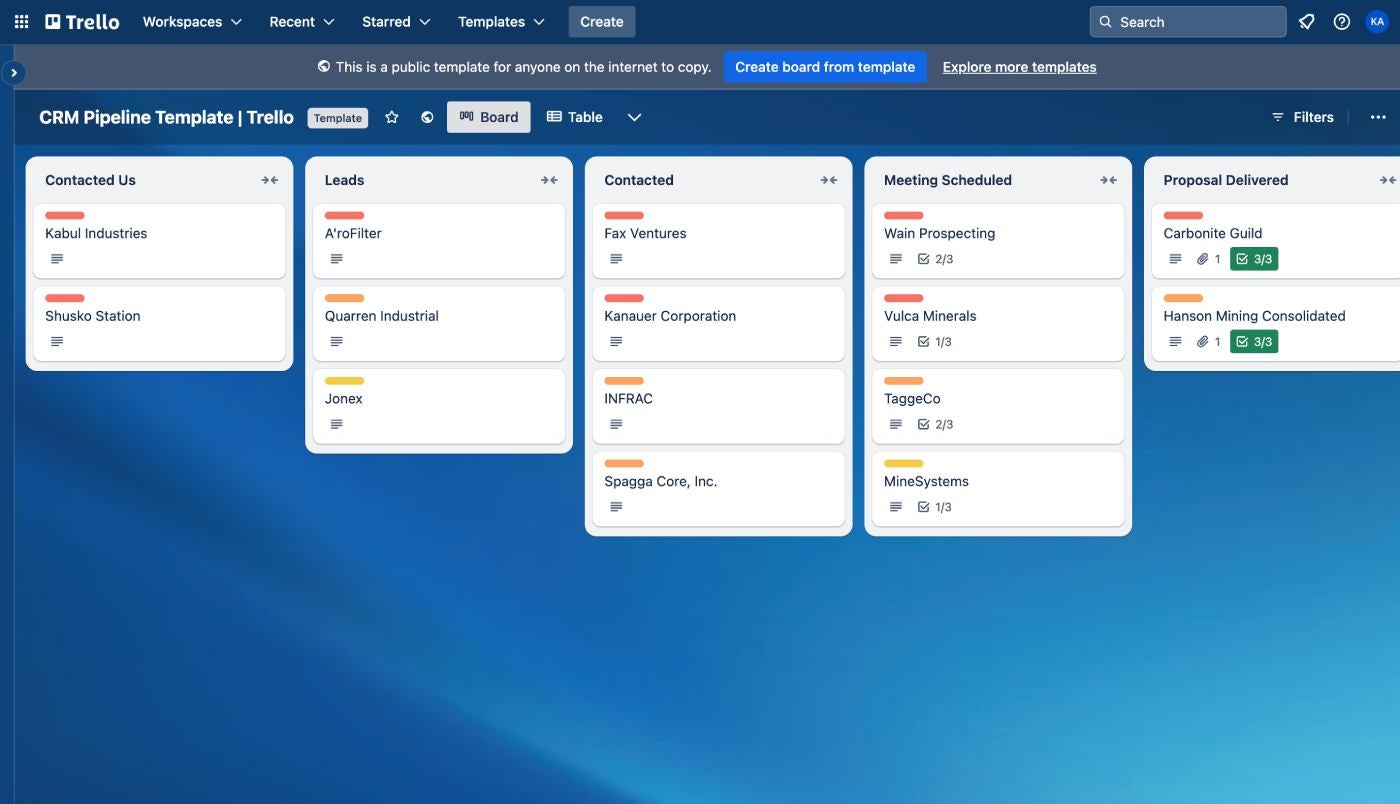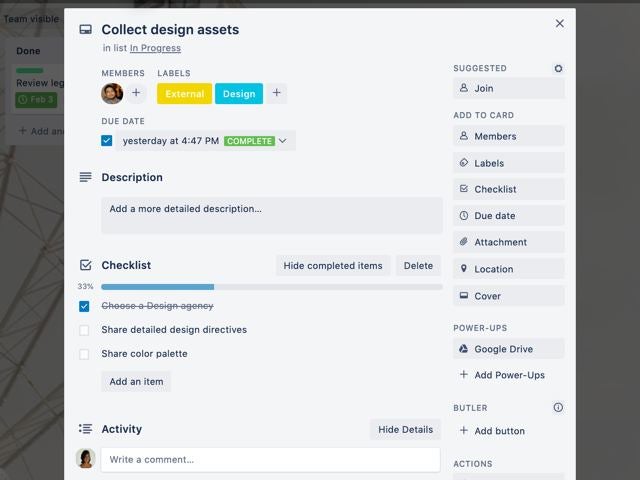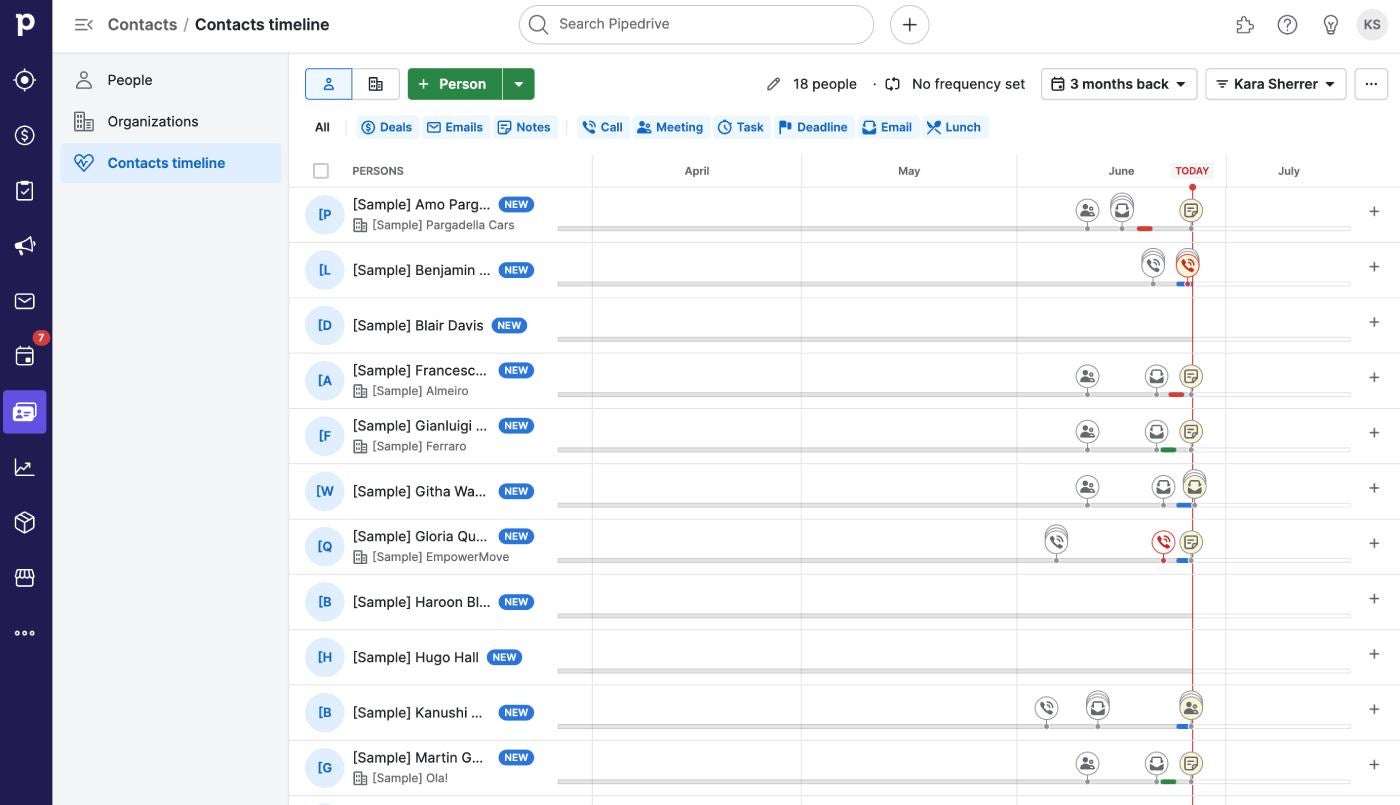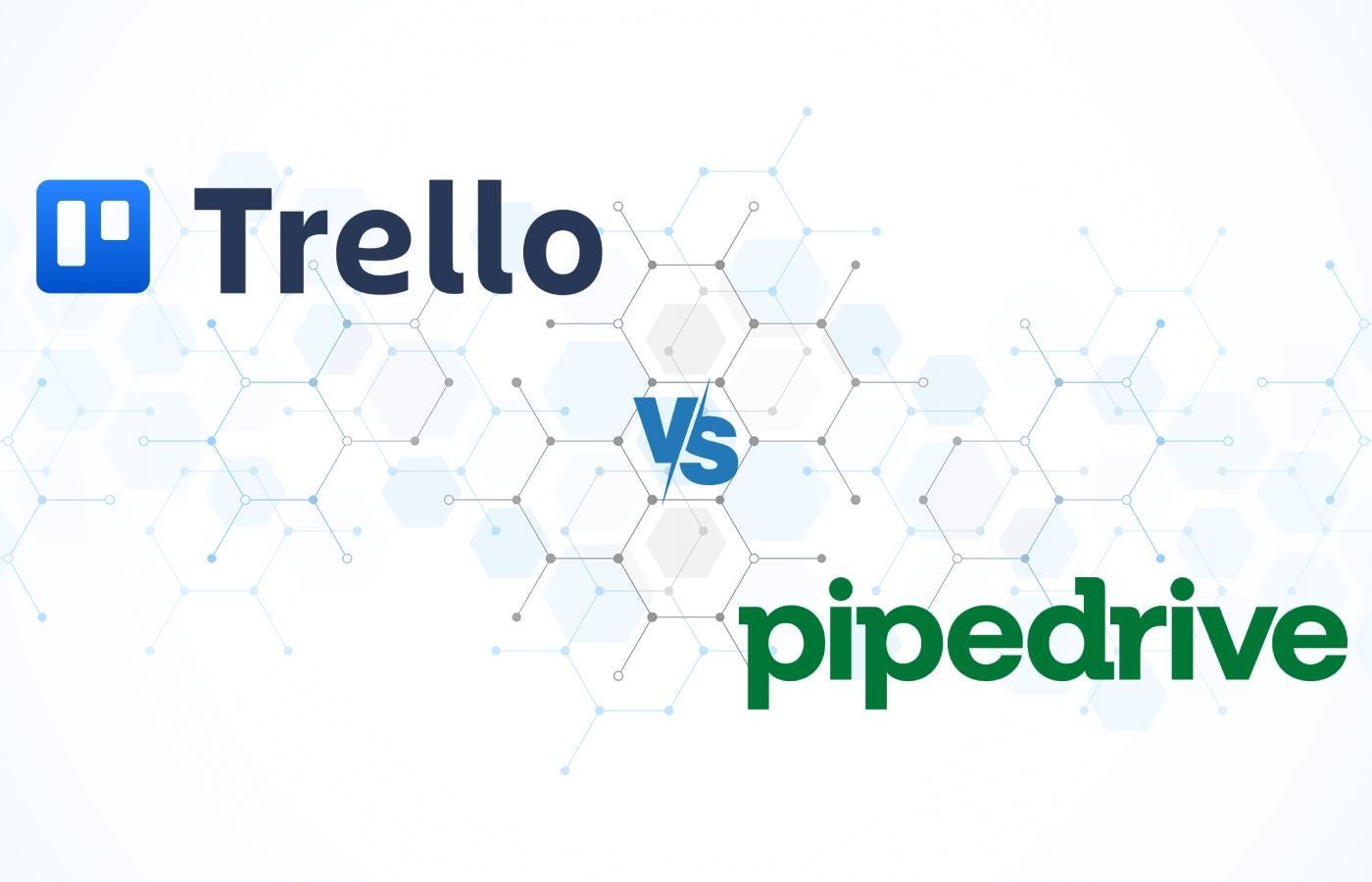Both Trello and Pipedrive use a Kanban board as the foundation of their design interface, but the similarities end there. That’s because Trello is designed as a simple project management platform, while Pipedrive is a CRM tool designed for sales teams. In this guide, we compare Trello and Pipedrive to help you decide which platform best suits your needs—or if you need both.
1
Monday.com
Employees by company size
Micro (0-49), Small (50-249), Medium (250-999), Large (1000-4999), Enterprise (5000+)
Any size of company
Any size of company
Characteristics
Agile development, analytics/reporting, APIs and more
2
Wrike
Employees by company size
Micro (0-49), Small (50-249), Medium (250-999), Large (1000-4999), Enterprise (5000+)
Medium (250-999 employees), Large (1000-4999 employees), Enterprise (5000+ employees)
Medium, large, corporate
Characteristics
Agile development, analytics/reporting, APIs and more
3
Fast base
Employees by company size
Micro (0-49), Small (50-249), Medium (250-999), Large (1000-4999), Enterprise (5000+)
Small (50-249 employees), Medium (250-999 employees), Large (1000-4999 employees), Enterprise (5000+ employees)
Small, medium, large, company
Characteristics
Agile development, analytics/reporting, APIs and more
Comparison table between Trello and Pipedrive
| Characteristics | ||
|---|---|---|
| Initial price (billed annually) | ||
| Free plan forever | ||
| Project Template Library | ||
| Integrated CRM | ||
| Importing Leads and Email | ||
|
|
Trello vs. Pipedrive: Pricing
Both Trello and Pipedrive offer five pricing plans to choose from. Trello offers a permanent free plan and a 14-day free trial for the Premium plan. Pipedrive offers a 14-day free trial for all five of its pricing plans, but a permanent free plan is not available. Pipedrive is more expensive than Trello, but it’s not really a fair comparison since they are two different types of software. Trello is one of the more affordable project management platforms, while Pipedrive is relatively affordable compared to other CRMs.
Trello Pricing
- Free:Includes unlimited cards and up to 10 boards per workspace.
- Standard:$5 per user per month, billed annually, or $6 per user billed monthly.
- Premium:$10 per user per month, billed annually, or $12.50 per user billed monthly.
- Company:Between $7.38 and $17.50 per user per month, billed annually, depending on the number of users. Teams with more than 5,000 users can contact Atlassian for custom pricing.
For more information, check out our detailed Trello review and see our list of Trello alternatives.
Pipedrive Pricing*
- Essential:$14 per user per month billed annually, or $24 per user per month billed monthly.
- Advanced:$29 per user per month billed annually, or $39 per user per month billed monthly.
- Professional:$49 per user per month billed annually, or $64 per user per month billed monthly.
- Force:$64 per user per month, billed annually, or $79 per user per month, billed monthly.
- Company:$99 per user per month billed annually, or $129 per user per month billed monthly.
* Pipedrive has three different pricing tiers, depending on the country. This pricing reflects what I see, based on US pricing.
For more information, check out our in-depth Pipedrive review and our Pipedrive vs Hubspot comparison.
Trello vs. Pipedrive: Feature Comparison
Project views and templates
Both Trello and Pipedrive are known for their easy and intuitive Kanban board interfaces, which is one of the only similarities between the platforms. In Pipedrive, I could switch between the Kanban board view (called the Pipeline view, Figure A) and the list view, which looks a bit like a spreadsheet grid. There is also a forecast view that shows possible future sales.
Trello offers more project views to choose from, such as Calendar, Timeline, Table, Board, and Map. However, you need to upgrade to at least the Premium plan to get these additional views in Trello – free and standard accounts only have access to the Kanban board, which is a bit of a drawback.
Pipedrive doesn't offer a library of templates you can browse, though it does allow you to create your own project template from scratch and save it for later use. In contrast, Trello offers dozens of board templates you can use, including the same sales-specific templates (Figure B). Because of its greater variety of views and project templates, I would recommend Trello for teams outside of sales.

Project management
Trello offers simple project and task management features that are easy for individuals and small teams to master, even if they’ve never used a project management tool before. Trello’s capabilities aren’t as advanced as some of its competitors, such as Microsoft Project or monday.com, which offer features like budget and workload management. However, that also means the learning curve is much lower for Trello.
In Trello, I had no trouble adding cards for each task and sorting them into multiple columns. I could add a checklist of subtasks to each card (Figure C), set a due date, attach files and links, add different colored labels, and assign tasks to myself or someone else. Once I created the cards, moving them between different columns was a breeze. Paid accounts have access to additional project management features such as advanced checklists and custom fields.

While primarily a CRM, Pipedrive does offer limited project management capabilities through a feature called Projects. Projects is a paid add-on for Essential, Advanced, and Professional plans, while it is automatically included in Power and Enterprise plans. If you decide to add this feature, it will cost $6.70 per user per month billed annually or $8 per user per month billed monthly.
Technically, you can use Projects for any type of task or project management, but once I started testing this feature, it became clear to me that it was designed specifically for sales teams. I was able to add tasks and subtasks, as well as specific activities common to sales teams, such as lunches and phone calls (Figure D). All tasks and activities can be grouped by the five main phases of the sales process or by person, organization or deal. There are also dedicated tabs where I can upload files, add notes, link emails and send and receive documents.

I can see how Pipedrive’s Projects features are useful for sales teams who want to keep everything centralized in a CRM, but its focus on sales makes it less useful for other types of teams. After testing both platforms, I find Trello to be the more flexible and affordable option for non-sales teams looking for a true project management software solution.
Leadership Management
Lead management is where Pipedrive really outperforms Trello. Pipedrive has numerous CRM features designed with sales teams in mind. Leads can be imported from the live chat, chatbot, or included web forms. Contacts are centralized in a list (Figure E) and can be linked to sales tasks or activities, such as scheduling a lunch. You can also link your email accounts to Pipedrive to keep everything in sync. There’s also a dashboard that highlights sales-specific metrics, such as lead conversion and average deal value.

While Trello does offer some sales templates, it lacks the robust built-in sales features that Pipedrive offers. For example, there are no modules for contact management or lead nurturing. You can connect third-party sales tools to Trello using integrations and power-ups, but its native features can’t really replicate a CRM like Pipedrive.
Pros and cons of Trello
Advantages of Trello
- Intuitive Kanban boards.
- Low learning curve and beginner friendly.
- Free plan forever.
- Affordable pricing plans.
Disadvantages of Trello
- You must upgrade to the Premium plan to get additional project views.
- Lacks advanced project management features.
- No CRM capabilities.
Pros and cons of Pipedrive
Advantages of Pipedrive
- Sales Pipeline Kanban Board Interface.
- Multiple pricing plans mean greater scalability.
- Import leads via chat and web forms.
- Sync emails directly into Pipedrive.
Disadvantages of Pipedrive
- There is no free forever plan.
- Project management is a paid add-on for most plans.
- Not suitable for non-sales teams.
Should Your Organization Use Trello or Pipedrive?
Choose Trello if…
- You want intuitive and flexible Kanban boards.
- You want simple project management software for different types of teams.
- You don't need super advanced project management features.
- Need a forever free plan option.
- You want to have a large library of templates to choose from.
Choose Pipedrive if…
- You are part of a sales team looking for a CRM.
- You need to be able to import leads easily.
- You don't need general-purpose project management software.
- You need to be able to sync your emails with your CRM.
- You want contact and lead management tools.
Methodology
To compare Trello vs. Pipedrive, I signed up for free trials of both programs, as well as reviewed product documentation, watched demo videos, and checked out our experts’ product ranking scores. I prioritized project management and sales features while writing this review. I also considered other factors like price, customer support, automations, and integrations.











